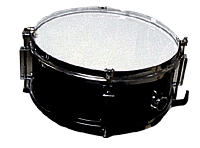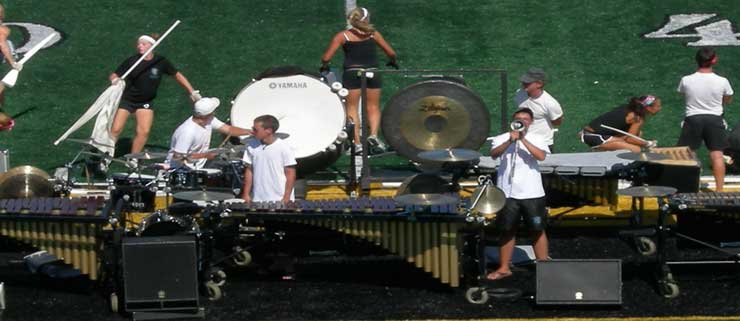 Choosing a good set of jazz drums can be an intimidating task for even the most experienced music educator. What sizes should the drums be? What sizes should the cymbals be? Which manufacturers should I consider? Which drumheads should I use? All of these questions can cause the brain to go into meltdown, especially if you aren’t even a drummer.
Choosing a good set of jazz drums can be an intimidating task for even the most experienced music educator. What sizes should the drums be? What sizes should the cymbals be? Which manufacturers should I consider? Which drumheads should I use? All of these questions can cause the brain to go into meltdown, especially if you aren’t even a drummer.
In this series of articles, I intend to present some basic tips and guidelines for any music educator looking to purchase new drum gear for their jazz program. First, I should mention this--no matter what anyone tells you, there are simply NO golden rules when it comes to this topic. Throughout the history of jazz, drummers have made it a point to search for their own, individual sound on their instrument. As such, one will find that all of the great jazz drummers have very different tastes and preferences when it comes to the specifics of their instruments.
What I’m setting out to accomplish here is to merely present some general considerations everyone should take when making their final choices. So, for Part I, we‘ll explore the topic of bass drum size.
This is a slippery topic, indeed. But a very important one, to be sure. Depending on the height and arm length of the students in your program, the size of the bass drum can, perhaps, be the most important choice of all. For example, the size of your bass drum will determine the height of the rack tom (or toms) above it. If you have a larger bass drum (22 or 24 inches in diameter), the height of the rack toms will be very high for the smaller students. Remember: the toms above your bass drum can go no lower than the top of the bass drum itself. That sounds like a simple enough concept, but I’ve been in various jr. high schools across the country where this simple concept was not taken into consideration, and the students’ ability to move efficiently around the drumset suffered as a result.
This obstacle often causes students to set up the drums in a way that hinders the development of good technique. For example, the smaller students will often tilt the toms at a very extreme angle in order to reach them. This can be successfully avoided if your bass drum size is more appropriate for the situation. Remember: the tall students in your program can always raise the toms to a comfortable height. However, the smaller students can’t lower the bass drum.
Furthermore, the sound produced by those large bass drums are more associated with rock, funk, and other popular music genres. Thus, a 24 inch bass drum might sound odd in a small-group jazz setting. However, an 18 inch bass drum may not produce the amount of ‘punch’ one needs to ‘kick’ the jazz big band.
Taking all of this into account, my general recommendation is to purchase a 20x16 bass drum (diameter x depth). With this size, all of the factors mentioned above can be achieved. The 20 inch bass drum will not require the rack toms to be mounted too high for smaller students, and one can achieve the amount of ‘punch’ needed for big band/rock/funk drumming. For small-group jazz playing, it is common for drummers to tune the bass drum quite high. While I would generally recommend an 18 inch bass drum for this reason, the 20 inch drum will serve just as well. Most 20 inch drums can be tuned high without sacrificing the resonance that is desired. In contrast, tuning a 24 inch bass drum high usually results in a choked sound.I hope this clears up any questions you may have regarding the topic of bass drum size. In my next article, I’ll suggest some tips for selecting sizes for the rack toms, floor tom, and snare drum. In the meantime, if you have any questions or comments, don’t hesitate to contact me.







 Scroll down to view the comparison chart of over a dozen different portable digital audio recorders.
Scroll down to view the comparison chart of over a dozen different portable digital audio recorders.